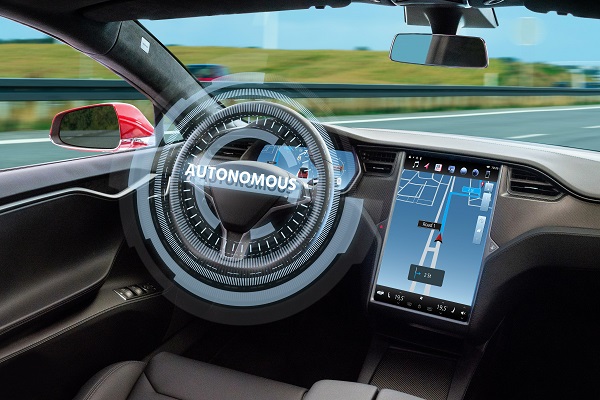Recently, an article about a vehicle from a new force that had a serious car accident with the “intelligent driving assistance function on” state (please forgive me for using such a long sentence to describe the car accident, because I really don’t want to get into any trouble) The news has exploded the Internet, making everyone pay attention to the technological development of autonomous driving and related social issues once again.
Regarding this accident, the process of the scene summarized from the information available on the Internet is roughly as follows: car owner A turned on ACC (adaptive cruise) and LCC (lane centering assist) on the elevated, and drove at a speed of 80km/h in Driving in the leftmost lane; suddenly there is a stationary vehicle in the same lane ahead, and there is a person B behind the vehicle; vehicle owner A’s vehicle did not brake or evade, and slammed into the stationary vehicle and person B, causing the stationary vehicle Person B in the rear died…Autopilot
According to Internet rumors, the accident owner A said: “I turned on the assisted driving system, but the system didn’t recognize it, and it happened that I was distracted at the time.”
So, who should be held responsible for the accident? The owner of the car that caused the accident? Or the designer and manufacturer of the car?
Although I have not purchased any vehicle with such “advanced” intelligent driving functions, I do not know how the vehicle user manual or user agreement is written, but according to the current common practice of various car companies, when the vehicle performs the intelligent driving function, the owner Must be responsible for monitoring road conditions at all times and need to be ready to take over the vehicle at all times.
Because no matter how loudly everyone blows in the advertisements, everyone knows very well that intelligent driving cannot be called automatic driving at all. The purpose of replacing the driver cannot be achieved.
According to Article 51 of the “Regulations on the Administration of Intelligent Connected Vehicles in Shenzhen Special Economic Zone”, the traffic management department of the public security organ shall deal with the driver in accordance with the law if an intelligent connected vehicle with a driver violates the road traffic safety. Article 54 stipulates that if a traffic accident occurs in an intelligent networked vehicle, if the damage is caused by the defect of the vehicle itself, the driver or owner or manager of the vehicle may request compensation from the manufacturer or seller in accordance with the law after completing the prescribed compensation.
It can be seen from the above provisions that in the event of an accident, the driver is still the first responsible person. If it can be proved that the vehicle itself is defective, he can claim compensation from the car company. But how can an average consumer prove that the vehicle is defective?
We do not want to analyze the cause of the accident in detail here – whether it is a design defect of the vehicle itself, or the responsibility of the driver; we just want to analyze the current status of intelligent driving from this accident.
According to the automatic driving classification standard of SAE J3016, at the level below L3, although the steering, acceleration and deceleration operations can be handled by the vehicle’s automatic automatic driving system, the human driver is still responsible for monitoring all conditions on the road. That is to say, at the level below L3, the automatic driving system is only an auxiliary, and the driver is fully responsible for the safe operation of the vehicle.
According to this division of responsibilities, when the current autonomous driving technology is far from mature, there have been various “creative” and Chinese characteristics such as L2.5, L2.9, and L2.9+. naming method.
Various OEMs are playing the ball, and no one dares to pat their chests and say that their autonomous driving system can already reach L3. Because once it is declared to be L3, then the responsibility for the accident of the vehicle in the L3 autonomous driving state needs to be borne by the car company.
In this state, on the one hand, everyone has to compete with each other in terms of technical strength, and constantly introduce more advanced self-driving functions, hoping to sell more cars; on the other hand, they dare not cross the border of L3. Because, as long as it is not L3, then all accidents have nothing to do with themselves, at least the user’s manual has clearly stated that it is the driver’s responsibility to be ready to take over the vehicle at any time.
However, in fact, let us think about this matter from another angle. When you participate in a meeting that does not require you to speak or record content, will you doze off, look at your mobile phone, or be in a daze… The current L2.X assisted driving function It’s such a strange existence, you don’t need to control the steering wheel, brakes and accelerator; but you still have to put your hands on the steering wheel and keep your eyes on the front, otherwise the DMS and other systems will alarm, prompting you to concentrate on monitoring pavement.
It’s as if you’ve got a professional driver and you have to supervise him all the time while he’s driving. When a dangerous situation occurs, if the full-time driver does not take action, you must intervene in time, otherwise the responsibility for the accident is yours.
Do you think this situation is a bit anti-human? Do people who buy cars with self-driving features like being coaches in driving schools? If self-driving features also require our own undivided attention, and we can’t keep them all the time, are these features so meaningful?
I’m not one against self-driving technology. On the contrary, I strongly support the development of self-driving technology. I believe that when the autonomous driving technology matures in the future, everyone can save a lot of time and energy, and the number of traffic accidents will be greatly reduced. However, the current autonomous driving is far from reaching the maturity that can be popularized on a large scale. Not only is it far from high-level autonomous driving, but even basic auxiliary functions such as AEB, LKA, and parking cannot be 100% reliable.
picture
(Image credit: SAE International)
In 1918, Scientific American published an article with a picture entitled “The Driver’s Dream: A Car Controlled by a Set of Buttons” (pictured below) showing a Self-driving trams. The article argues that “…in the future, cars with steering wheels will be as obsolete as cars with hand pumps today!”
picture
(Image credit: Scientific American)
In the past 100 years, human beings have always had persistent pursuit and unrealistic fantasy about autonomous driving, and they always feel that autonomous driving can be realized in another 20 years. Sadly, to this day, no one can say exactly when a car without the steering wheel will be able to hit the road. And as people get closer to this dream, they increasingly realize the difficulty and complexity of realizing fully autonomous driving.
The realization of autonomous driving depends not on the vehicle itself, but on the efforts of the entire transportation system. It is not just relying on OEMs and suppliers of autonomous driving, but on the common progress of all fields of the whole society.
Here are some inspirational suggestions:
1. Improve the standards for the accident data recording system of the intelligent driving system.
Although the country already has the relevant standards of EDR (Event Data Recorder, that is, the automobile event data recording system), it can only record the basic information of the vehicle. At this stage, it is still up to car companies to decide whether intelligent driving fails, and there is no effective third-party supervision. Because of the huge amount of complex data, no one can tell exactly what happened, except for car companies and their suppliers. The root cause of this phenomenon is that there are no more detailed national standards for relevant content, what is the meaning behind each data, which data must be stored and when, and so on. These requirements are still missing. It is suggested that relevant institutions and associations can refer to the practice of automobile OBD to establish corresponding standards as soon as possible and continue to improve them.
2. The state should establish a unified driving scene simulation database and inject detailed information about traffic accidents synchronously.
The perfection of autonomous driving algorithms requires massive data accumulation. It is difficult for any single enterprise to complete such an amount of data accumulation in a short period of time by its own strength. Only by changing the situation of each enterprise fighting alone and forming a win-win situation Only by learning the practice of open source software can we gather the strength of the whole country to make our intelligent driving really take the lead in the world.
3. For vehicle access, the regulatory authorities should issue more detailed testing and certification standards as soon as possible.
Although the current intelligent driving is still in the development stage and the system solutions vary widely, some basic principles and methods can still be defined at this stage. And, once a national database of driving scenario simulations is established, it can be used as a benchmark to test all newly admitted vehicles in the cloud. Avoid lengthy road tests and reduce costs.
4. Find a path to efficient and reliable OTA management. Due to the fast iteration speed of the autonomous driving algorithm, car companies must continuously update the software through OTA. At present, the registration system is adopted for the supervision of OTA, which leads to major changes in the functions and performance of the vehicles that were originally admitted after OTA. How to find an efficient and reliable OTA management method is a major challenge facing the current automotive industry supervision.
Finally, I sincerely wish those companies that put their treasures on autonomous driving. I hope you all have enough resources and patience to survive the long night and see the dawn of dawn!




GIPHY App Key not set. Please check settings